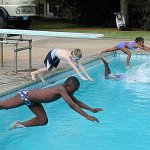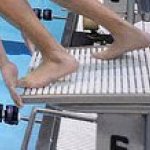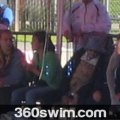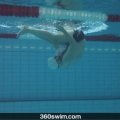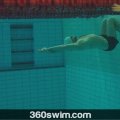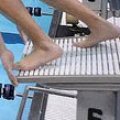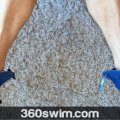THE JAVELIN START: MASTERING YOUR ENTRY, UNDERWATER, AND BREAKOUT
In our previous lesson, we covered the on-block mechanics of a great start: reaction time and a powerful push-off. Now, it's time to master what happens after you leave the block.
A powerful dive is useless if you lose all your speed in the water. This lesson will break down the three crucial in-water phases - the entry, the underwater kick, and the breakout, using the analogy of a javelin to help you create a seamless and explosive start.
Dive Into: The In-Water Phase of the Start
- Part 1: The Clean Entry (The Javelin Tip)
- Part 2: The Underwater Kick (Finding the Right Depth)
- Part 3: The Powerful Breakout
- Frequently Asked Questions
Part 1: The Clean Entry (The Javelin Tip)
To understand how your body should enter the water, think of a javelin. A good throw has the perfect arc, allowing the javelin to travel a long distance before sticking in the ground at the ideal angle.
Your dive is like the second half of that arc. To enter the water with the least amount of splash, your body's angle has to be just right. Think of your fingertips creating a single, small hole in the water, and your entire body - from your head to your toes must pass through that same hole. This requires a tight streamline, a head locked between your arms, and your feet together.
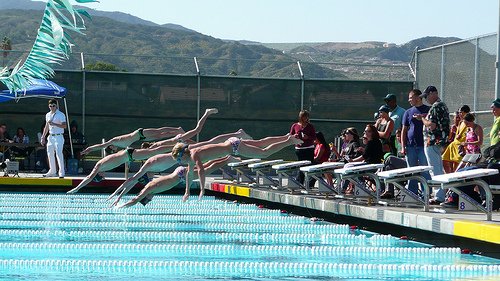
Part 2: The Underwater Kick (Finding the Right Depth)
Sticking with the javelin analogy, if you jump too high off the block (a high arc), you will enter the water too steeply and go very deep. This kills your speed as you struggle to get back to the surface. If you dive too flat (a low arc), you'll slap the water or get caught in the surface drag.
Your goal is to stay at the ideal depth where you produce the least amount of drag (~2-3 feet or 60-90 cm) for as long as you can maintain your speed. This is where the underwater dolphin kick or a powerful breaststroke pullout comes in.
The kick should be a powerful, whipping motion that starts from your sternum and flows down to your toes. Your arms, head, and shoulders must remain perfectly still in a tight streamline (although, there is an alternative thought that the wave starts from your arms, so you wiggle like a fish). They are the "tip of the javelin" piercing through the water while your lower body provides the propulsion.
How many kicks? Well, this depends on how good you are. Good kickers should have as many as possible. Bad kickers, probably want to come up to the surface quite fast after the start.
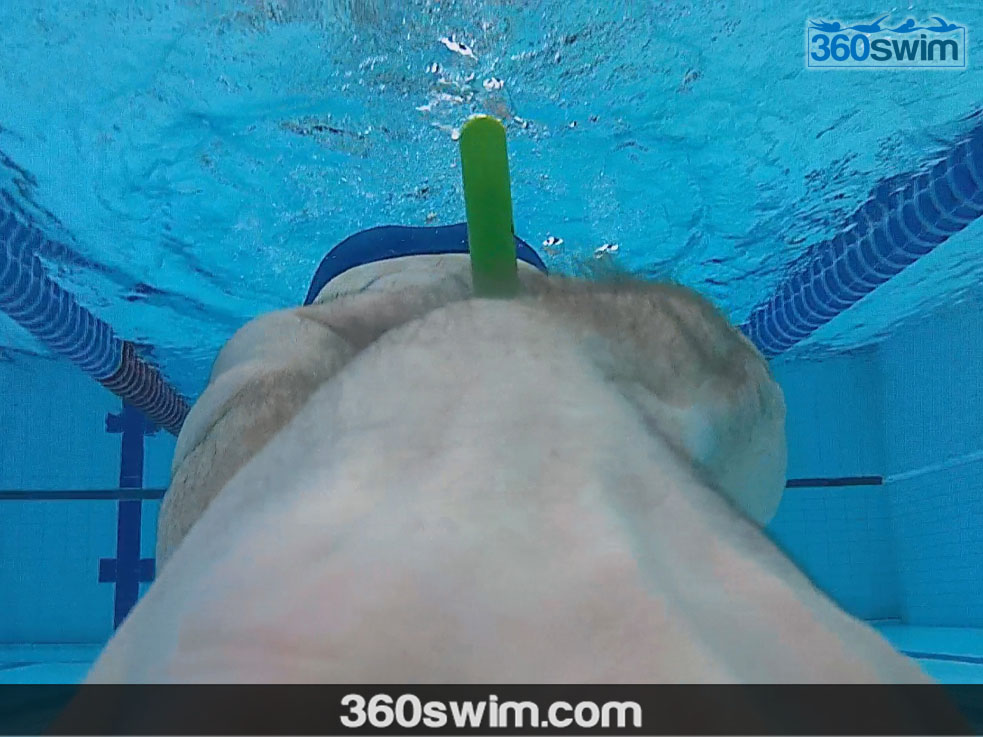
Part 3: The Powerful Breakout
The breakout is the transition from your underwater work to your first stroke on the surface. Many swimmers make a critical mistake here: they let their hands break the surface first.
This is wrong. Your first pull should be your engine to get you onto the surface. Therefore, your arm should start its pull just before any part of your body breaks the surface.
This first pull will help to "pop" you out of the water and drive you directly into your swimming stroke. If you let your arms come out of the water first, you've wasted your most powerful underwater stroke and killed your momentum.
So, to recap, your arm starts its pull right before any part of your body breaks the surface of the water to help you maintain the speed from the dive.
This is a very difficult skill to time correctly. If you start your pull too deep, you create drag. If you start it too late, you lose speed.
One last, critical comment: KEEP YOUR HEAD DOWN. Do not look for the surface. Pretend you are watching an object on the bottom of the pool at all times.
As a wise man once said, "practice makes perfect." So get out there and keep practicing your starts, underwater work, and breakouts until they become second nature.
Frequently Asked Questions
How do I get a clean, splash-free entry on my dive?
Think of your body as a javelin. You want to enter the water through a single, small hole. This is achieved by holding a rigid streamline with your head locked between your arms and your feet together, entering the water at the perfect angle, not too steep and not too flat.
I dive too deep and lose all my speed. What am I doing wrong?
Diving too deep is usually caused by an arc that is too high, like a javelin thrown upward. You are jumping up instead of out. Focus on a powerful, forward drive off the block to create a flatter trajectory into the water.
What is the most important part of the underwater phase?
The most important part is maintaining your speed. Use a powerful, rhythmic dolphin kick that originates from your chest, not just your knees. Keep your head, arms, and shoulders perfectly still in a tight streamline, acting as the 'tip of the javelin'.
What is a 'breakout' in swimming?
The breakout is the transition from your underwater glide to your first stroke on the surface. The goal is to carry your underwater speed seamlessly into your swimming, so the timing of your first pull is critical.
How do I do a powerful breakout?
A powerful breakout is initiated by your first arm pull, which should start just before your head breaks the surface. This pull helps to 'pop' you out of the water and drives you directly into your first stroke, preventing any loss of momentum.
 LNURL1DP68GURN8GHJ7URP0YHRXD3SWDMKJMFWVDHK6TMVDE6HYMRS9A4HSCNCWFXSH3NN0H
LNURL1DP68GURN8GHJ7URP0YHRXD3SWDMKJMFWVDHK6TMVDE6HYMRS9A4HSCNCWFXSH3NN0H